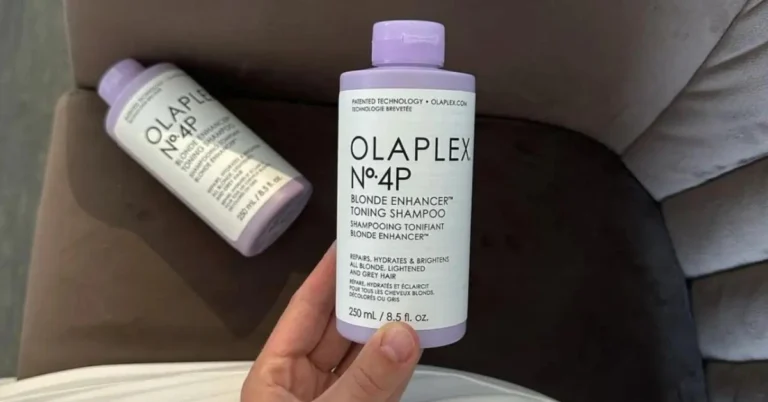Are you tired of looking at your reflection and yearning for the days when your skin was lively and without imperfections? Does it bother you that your dull skin tone fails to show your vibrant spirit?
Look no further, for the answer to your beauty woes lies within the realm of salicylic acid and glycolic acid. These two transformative exfoliants hold the key to uncovering that long-lost healthy glow and attaining a flawlessly radiant complexion in a flash.
But wait, you might be wondering: can I combine salicylic acid and glycolic acid? The resounding answer is YES! Brace yourself for a game-changing revelation. While these powerhouses serve distinct purposes, they possess an extraordinary ability to join forces and wage a relentless war against a multitude of skin concerns.
Table of Contents
Salicylic Acid and Glycolic Acid
Salicylic acid is a beta hydroxy acid (BHA) known for its oil-soluble properties, which makes it perfect for penetrating and unclogging pores. If you’re dealing with acne-prone or oily skin, this acid will become your best friend as it can help eliminate blackheads, whiteheads, and regulate sebum production.
On the other hand, glycolic acid, an alpha hydroxy acid (AHA), is water-soluble and derived from sugary fruits. It works wonders for fading skin discoloration, reducing fine lines, and promoting collagen production.
By incorporating both salicylic acid and glycolic acid into your skincare routine, you can reap the benefits of their combined action and soon witness transformative results.
Be mindful of the concentrations and frequency of use, and don’t forget to keep your skin moisturized and protected from the sun. So go ahead and embrace the magic these two acids bring to your quest for radiant, blemish-free skin.
Chemical Composition
Salicylic Acid: a beta hydroxy acid (BHA), salicylic acid has a unique structure that allows it to penetrate deeper into your pores, making it an excellent solution for tackling acne. Its lipophilic nature gives it remarkable exfoliating, keratolytic, and anti-inflammatory properties .
Glycolic Acid: an alpha hydroxy acid (AHA), glycolic acid is derived from sugar cane and has excellent exfoliating abilities. It’s water-soluble, making it perfect for breaking down dead skin cells on the surface, and, at certain concentrations, it has antibacterial properties .
Function in Skin Care

Salicylic Acid:
- Targets acne, blackheads, and clogged pores by getting deep into your skin’s layers
- Unclogs and shrinks enlarged pores
- Soothes irritations and reduces inflammations
Glycolic Acid:
- Buffs away dead skin cells for a smoother, more even skin tone
- Boosts collagen production, promoting a youthful appearance
- Used in anti-aging products to address fine lines and wrinkles
| Pros | Cons |
|---|---|
| Both acids are effective exfoliants, sloughing off dead skin cells | These acids might cause dryness or irritation if overused |
| Suitable for various skin types, working on different issues | They may not work well for sensitive or allergy-prone skin |
| Can be used together, offering a more potent acne-fighting regimen | Proper care and balance are essential to ensure effectiveness |
So, give salicylic acid and glycolic acid a try. By understanding their differences and choosing the one that best suits your skin needs, you’re one step closer to achieving a flawless complexion. Remember to patch test first and consult a dermatologist if you have any concerns.
Benefits and Uses

If you’re keen on improving your skincare routine, salicylic acid and glycolic acid are two ingredients you’ve likely come across. These powerhouses provide incredible benefits for various skin concerns. Let’s dive into the specific advantages and uses of these two phenomenal acids.
Exfoliation
Glycolic acid, an alpha-hydroxy acid (AHA), chemically exfoliates the skin by dissolving dead skin cells and oils. Salicylic acid, a beta-hydroxy acid (BHA), works similarly but also penetrates deeper into the pores, making it a popular choice for acne-prone skin.
Acne Treatment
Both acids are effective in treating acne, but they target different aspects. Glycolic acid helps reduce acne by boosting collagen production and maintaining skin moisture. Salicylic acid is famous for its anti-inflammatory properties and ability to minimize acne and blackheads.
| Glycolic Acid Pros | Glycolic Acid Cons | Salicylic Acid Pros | Salicylic Acid Cons |
|---|---|---|---|
| Boosts collagen production | May cause dryness | Anti-inflammatory properties | Not suitable for dry skin |
| Maintains skin moisture | Less effective on acne | Minimizes acne and blackheads | Less effective on non-acne-prone skin |
Hyperpigmentation
Glycolic acid has the upper hand when it comes to treating hyperpigmentation. Its ability to accelerate cell turnover lightens dark spots and evens out skin tone. My personal experience with glycolic acid was excellent, as it helped brighten my complexion and diminish acne marks.
Wrinkle Reduction
Both acids are known for their ability to minimize wrinkles. Glycolic acid boosts collagen production, which improves skin elasticity and reduces the appearance of fine lines. Salicylic acid exfoliates the skin and promotes new cell growth, resulting in a smoother and more youthful appearance.
From my personal experience, incorporating salicylic acid and glycolic acid into my skincare routine has been a game-changer. Remember to patch test and introduce these acids slowly to ensure your skin can tolerate them. With consistent use and the right balance, your skin will thank you for introducing these game-changing ingredients.
my best friends are salicylic acid and glycolic acid
— rach (@sadnotr4d) October 24, 2020
Side Effects and Precautions
If you’re looking to improve your skin’s appearance, salicylic acid and glycolic acid are two popular ingredients you might come across. But before diving in, it’s important to understand the potential side effects and precautions associated with these acids, as well as how to avoid any issues. Let’s explore the main concerns:
Skin Irritation
Both salicylic acid and glycolic acid can cause skin irritation, particularly if used in high concentrations or applied too frequently. To minimize the risk of irritation:
- Start with lower concentrations and gradually increase.
- Apply the product every other day, gradually increasing the frequency.
- Discontinue use if excessive redness, burning, or itching occurs.
Sun Sensitivity
Using exfoliating acids like salicylic and glycolic acid can increase your skin’s sensitivity to the sun. This makes it even more crucial to practice proper sun protection. Always:
- Wear a broad-spectrum sunscreen with an SPF of at least 30.
- Reapply sunscreen every 2 hours or after swimming or sweating.
- Cover up with clothing, hats, and sunglasses when outdoors.
Contraindications
There are certain situations in which salicylic acid and glycolic acid should be avoided or used with caution:
- Pregnancy: Consult your healthcare provider before using salicylic acid, as it may pose risks during pregnancy.
- Allergies: If you have a known allergy to aspirin or other ingredients in the products, avoid salicylic acid.
- Skin conditions: Those with eczema, rosacea, or extremely sensitive skin should use these acids with caution and under a dermatologist’s guidance.
Remember, always patch test new products containing these acids and pay attention to your skin’s response to ensure the best possible results.
Benefits and Side Effects: The Essentials

When it comes to skincare, salicylic acid and glycolic acid are two game-changing ingredients. But what exactly are their benefits and potential side effects?
Pros and Cons of Glycolic Acid and Salicylic Acid
| Pros | Cons | |
|---|---|---|
| Glycolic Acid | Smooths skin, boosts collagen production, increases skin moisture | May cause irritation, redness, and dryness |
| Salicylic Acid | Treats acne, blackheads, warts, corns, dandruff, and psoriasis | Can cause dryness, peeling, and rarely, allergic reactions |
Despite their potential side effects, salicylic acid, and glycolic acid can do wonders for your skin when used correctly. When starting with these ingredients, it’s crucial to patch test and follow up with proper moisturization to minimize the risks of irritation and dryness.
Remember, everyone’s skin is different, and what works wonders for your friend might not be the best option for you. So, take your time to experiment, listen to your skin’s needs, and feel free to change your skincare routine as necessary.
After all, the ultimate goal is to achieve healthy, beautiful skin, and these acids can surely help you on your journey.
chemical exfoliants such as salicylic acid and glycolic acid that can gently clean/unclog your pores without stressing it and making it appear larger left the watsons😭🪦
— ari my love (@haro1d8) June 26, 2021
How to Use Salicylic Acid and Glycolic Acid
Who doesn’t want flawless skin? Combining salicylic acid and glycolic acid in your skincare routine can help you achieve just that. These powerful exfoliators tackle blemishes, acne breakouts, and early signs of aging. To make the most out of these acids, let’s dive into product selection and application techniques.
Product Selection
When choosing a product containing salicylic acid and glycolic acid, it’s essential to know your skin type. Some people might be more sensitive to these acids, so you should start with lower concentrations.
For beginners, I suggest a product with a maximum of 2% salicylic acid and 5% glycolic acid. Gradually increase the concentration as your skin adapts.
For acne-prone skin, choose products with salicylic acid, as it penetrates deeper into the pores, breaking down oil and debris. If you’re after a brighter complexion, glycolic acid is your go-to choice due to its ability to exfoliate dead skin cells and boost collagen production.
Application Techniques
Before incorporating salicylic acid and glycolic acid into your routine, patch test on a small area to ensure your skin tolerates them well. Here are some tips for application:
- Cleanse your face: Start with clean skin before applying the acids.
- Apply the product in moderation: Less is more! Start with a small amount and gently massage it into your skin, focusing on problem areas.
- Wait for absorption: Give each acid some time to work on your skin before adding the second one. I recommend waiting at least 20 minutes.
- Moisturize: These acids can be drying, so always follow up with a good moisturizer.
- Sun protection: Since exfoliating acids increase sun sensitivity, never forget to apply sunscreen during the day.
In my experience, consistency is key. Regularly using salicylic acid and glycolic acid can significantly improve your skin’s appearance over time. Just be patient and watch your skin transform!
| Pros | Cons |
|---|---|
| Effectively exfoliates | Can cause dryness |
| Clears acne | Not suitable for all skin types |
| Fades blemishes | Increases sun sensitivity |
| Smooths skin texture | Might cause irritation |
Personal Tips
In my experience, using these acids can initially cause mild redness or flaking. Don’t worry! This is normal as your skin adjusts. Just make sure to adjust your usage and listen to your skin’s needs.
Remember, chemical exfoliation can increase your sensitivity to the sun. Always wear sunscreen and protect your fresh, renewed complexion!
FAQ

Can I use salicylic acid in the morning and glycolic acid at night?
Yes, it’s recommended to use salicylic acid in the morning for unclogging pores and glycolic acid at night for exfoliation and removing dead skin cells.
Can I use glycolic acid everyday?
Using glycolic acid daily may be too harsh for some individuals. Start with a lower frequency, such as every other day or a few times a week, and gradually increase usage if your skin tolerates it well.
Can I use salicylic acid everyday?
Yes, salicylic acid can typically be used daily, but it depends on your skin’s sensitivity. Start with a lower frequency and gradually increase usage if your skin tolerates it well.
How long does glycolic acid take to lighten skin?
Visible skin lightening with glycolic acid may take around 6-8 months of consistent use to see noticeable progress. Individual results may vary depending on factors such as skin type and the concentration of glycolic acid used.
Should I moisturize after glycolic acid?
Yes, it’s important to moisturize after using glycolic acid to help restore hydration and maintain skin barrier function. Choose a gentle, non-comedogenic moisturizer to replenish moisture and protect your skin.
Do you need sunscreen with salicylic acid?
Yes, it is recommended to use sunscreen when using salicylic acid as it can increase sun sensitivity. Protect your skin from harmful UV rays by applying a broad-spectrum sunscreen with SPF to maintain skin health and prevent sun damage.
If you liked this blog article about the topic: Salicylic Acid And Glycolic Acid, don’t forget to leave us a comment down below to tell us about your experience with these two ingredients.





